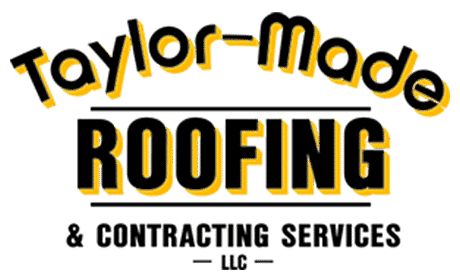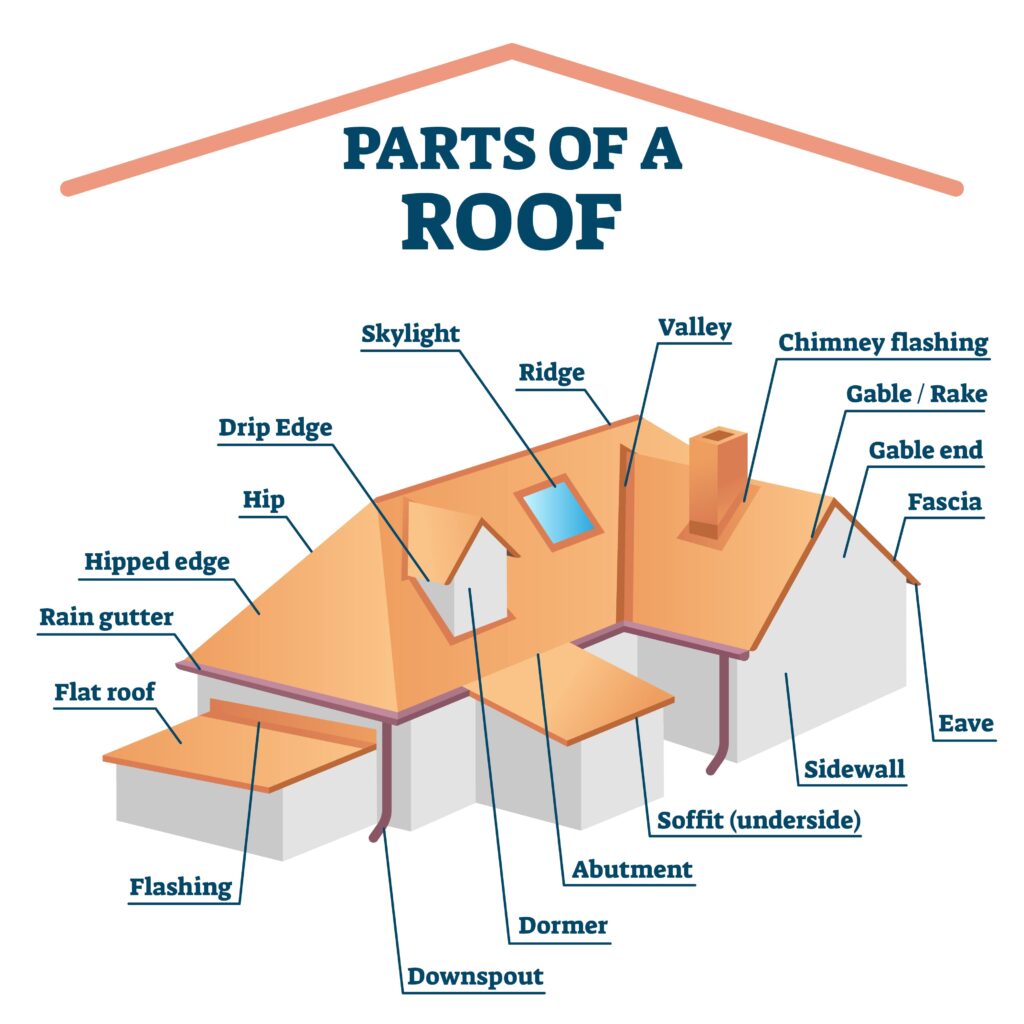Whether you’re a new homeowner or a veteran, there are always new things to learn. Although it’s not necessarily critical that you know how to name all the different parts of your roof, you may find it helpful when describing an issue to your roofer or insurance company. Or, perhaps you just find it interesting! So, what are the parts of a roof called? Scroll down to check out our handy diagram and guide.
What Are the Parts of a Roof Called?
Hips & Gables
A hipped roof is a roof design in which all the sides of the roof slope downward toward the walls, and the walls rest under the eaves on each side. Usually, it features a gentle pitch.
A gable roof, on the other hand, is a roof design where only two sides slope downward toward the walls; on the other two sides, the walls extend from the bottom of the eaves to the peak of the ridge. A gable (also known as a gable end or gable wall) is the triangular portion of the wall between the intersecting roof pitches.
Some homes, like the example above, use a combination of the two.
Ridge
The ridge is the horizontal line running along the length of the roof where two or more roof planes meet. It forms the highest point on the roof, also known as the peak.
Valley
A valley occurs at the juncture where two roof planes meet at a slope, forming an interior angle. Valleys help rain flow off your roof.
Flashing
Roofers install flashing, a thin metal material, to direct water away from areas where the shingles butt up against a vertical surface, like a wall, a chimney, or a dormer. Flashing surrounds roof features as well, including vents and skylights. When flashing performs its role correctly, rain runs down onto the shingles instead of migrating to the roof deck and causing leaks.
Drip Edge
A drip edge is an angled type of roof flashing that diverts water away from your roof’s edge or fascia. It redirects water into the gutters, which carry the water away. Drip edges can be installed on a roof’s rakes and eaves.
Rake
A rake is present on every gable roof. Rakes are the exposed parts of the roof extending from the eaves to the ridge. To describe them in another way, they are the sloped sides of the gable end. They can be flat, or they might overhang the gable like an eave.
Eave
Eaves are the edges of the roof that extend beyond the exterior siding. By protruding, they help snow and rain fall away from the sides of your home. Eaves contain multiple parts, including the soffit and fascia.
Soffit & Fascia
The soffit is the material that lines the underside of the roofing, beneath the eaves and fascia, and it can be either vented (to promote airflow) or closed (to protect the interior).
The fascia is the forward-facing trim that lines the perimeter of the roof, located at the end of the roof’s rafters. It’s perpendicular to the soffit.
Together, the soffit and fascia cover the rafters, trusses, and interior roof cavity. They also seal off the edge of the roof, preventing water damage and pest invasions, and support the gutters and downspouts.
Abutment
An abutment is the junction of a roof surface with a wall or any other structural feature that rises above it. Abutments are commonly seen on home additions and attached garages.
Dormer
A dormer is a roofed structure that projects vertically from the plane of a pitched roof and typically houses a window. It may be gabled, hipped, flat, or sloped on one or both sides. In addition to adding architectural interest, dormers are often included to add living space to a loft and to create window openings in a roof plane.
_____
What are the parts of a roof called? We hope this little guide helped clarify. But if you have more questions, don’t hesitate to contact a roofing professional. They would be happy to help, and they won’t mind at all if you don’t know the exact name of a certain component!
If you live in southwest Missouri, contact Taylor-Made Roofing for help. With over 20 years of experience in residential and commercial roofing, Taylor-Made Roofing is a company that you can trust with all of your roofing needs. Our family-owned business offers quality services, a reassuring warranty, and free estimates. For more information, please give us a call at 417-326-8778 or contact us online. We look forward to hearing from you!

